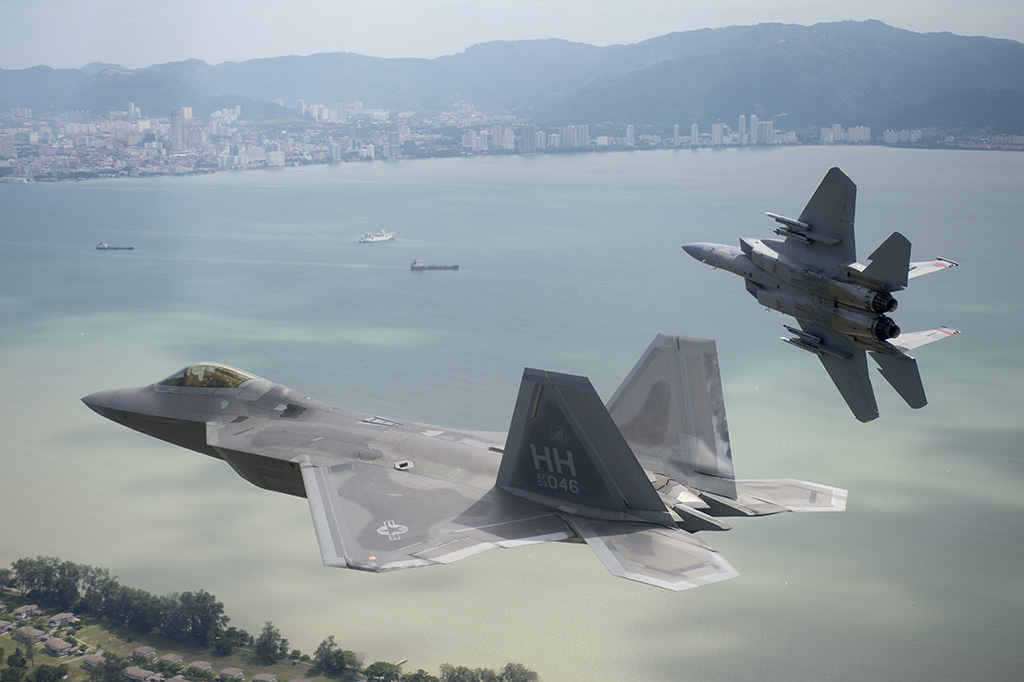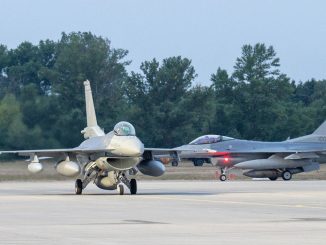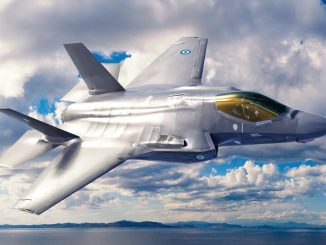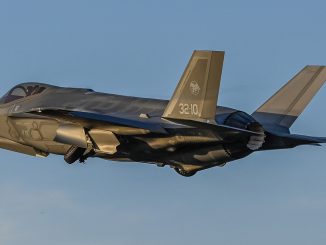
A mix of Raptors and Eagles can be pretty deadly, even if outnumbered by enemy fighters.
More than 250 airmen and 9 F-15 Eagle jets from the 104th Fighter Wing, Massachusetts Air National Guard, deployed to Tyndall Air Force Base, Florida, for the Weapons Systems Evaluation Program (WSEP).
Known also as “Combat Archer”, WSEP is an air-to-air exercise hosted by the 53rd Weapons Evaluation Group to improve air-to-air tactics and practice weapons systems employment: fighter pilots rarely get a chance to fire live missiles, WSEP exercises are almost always the first and only opportunity to use live air-to-air weapons and validate their shots.
“The WSEP does two things,” said Col. Jeffrey Rivers, Commander of the 83rd Fighter Weapons Squadron, Weapons Systems Evaluation Program in a U.S. Air Force release. “It feeds Combat Air Force’s (CAF) training and readiness. We get air crew experience for the first time subsequent to the events, sounds, sights, smells, and noise of a real missile coming off the jet in a realistic scenario they would find normally in training but now it is with real weapons and real targets to shoot at.”
Missiles used in Combat Archer tests usually don’t carry a warhead, replaced by telemetry packages. The AAM are shot over the Gulf of Mexico at various types of drone targets (including the MQM-107D Streaker and the unmanned aerial targets such as the QF-4 recently retired).
During WSEP, the Massachusetts ANG’s Eagle jets flew 212 sorties out of 221 sorties and successfully fired 14,661 bullets at WSEP, totaling 100 percent of the guns on the aircraft firing every time as well as 17 missiles obtaining a mission capable rate of 83%.
“Our deployment to Tyndall really had two different but complimentary themes,” said Col. William Bladen, 104th Fighter Wing, Operations Group Commander. “The WSEP portion focused on exercising and testing the kill chain from the missile build all the way through its destruction of a target. It takes several miracles for a missile to complete an intercept. […] The second piece of the deployment was large force exercises and 4-ship training which is the core fighting force in the Eagle. With several other fighter airframes on the Gulf Coast, we were able to put together daily outnumbered scenarios that we cannot produce up here at Barnes. The last day of the trip we flew 4 F-15s and 4 F-22s against 14 “red air” fighters. For our training, we allowed the red air to regenerate after being killed by a blue air fighter. The final results of that mission: Blue Air killed 41 enemy aircraft and lost just one. While pretty phenomenal, perfection is our goal so the debrief focused on how we could have had a 41-0 ratio.”
Pretty impressive, even though, as always, we don’t know anything about the ROE (Rules Of Engagement), the scenarios, the threat profile, the simulated loadout etc. In this case, we don’t even know the type of adversaries the Eagle/Raptor flight had to fight nor how America’s two premiere fighters cooperated to shoot down all the enemies in the simulated engagements.
Kill ratios attributed to both single types or combined forces always seem to suggest there were direct engagements WVR (Within Visual Range). However, BVR (Beyond Visual Range) aerial combat is probably more likely in future air wars where air dominance has not been clearly established. As proved by what we have witnessed in the Nevada desert during Red Flag 17-2.
During WSEP, mixing the deadly ability of the stealthy F-22s to gather, fuse, and distribute information to provide the Counter Air forces with vital situational awareness that could be exploited to engage highly sophisticated aerial threats, with the air superiority capabilities of the un-stealthy F-15s, equipped with powerful Active Electronically Scanned Array (AESA) radars proved to be pretty effective.
As said we don’t know anything about the assets that were defeated during the mock air combat at WSEP. “On the ramp at Tyndall Air Force Base alongside 104th Fighter Wing Eagles, were Canadian CF-18s, F-35s, F-16s, and F-22s,” says the U.S. Air Force release. Some of these might were probably part of the Red Air.
Top image: file photo of a U.S. Air Force F-22 and F-15, 104th Fighter Wing, flying together during Cope Taufan 14 exercise.



